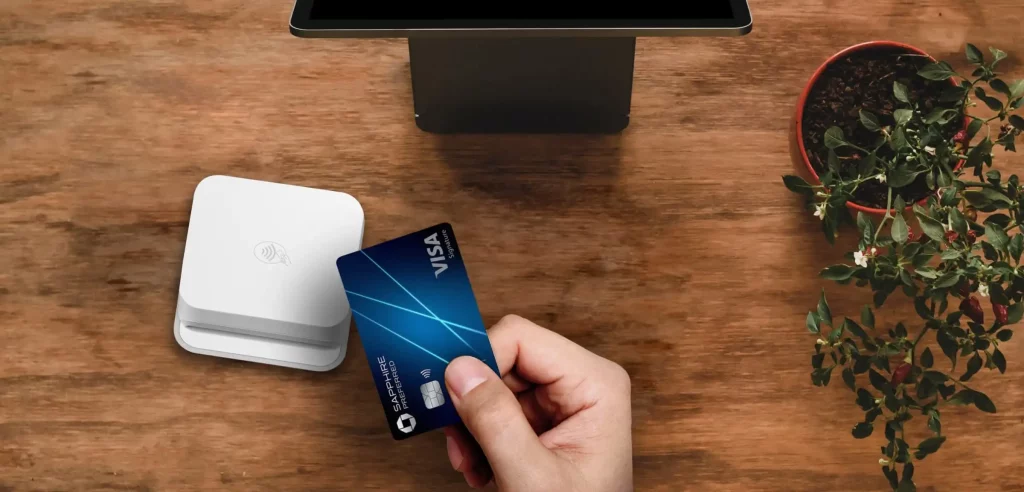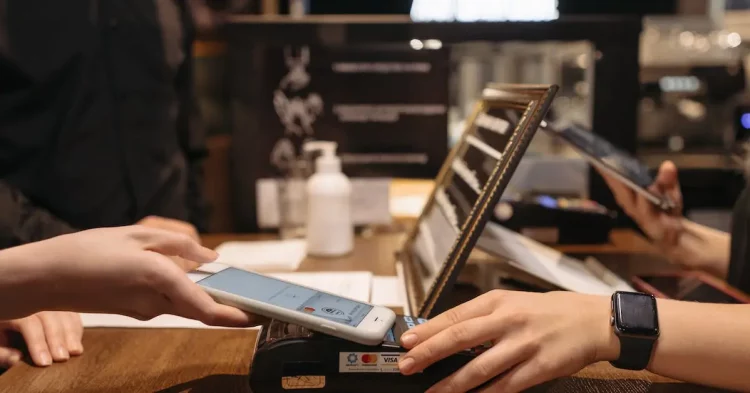In the world of finance, global payments have been a cornerstone of international trade, commerce, and economic development for decades. Yet, despite advancements in technology, traditional payment systems remain slow, costly, and inefficient, especially when it comes to cross-border transactions. High fees, long processing times, and the need for multiple intermediaries have made international payments a complex and cumbersome process.
Blockchain technology, however, has the potential to completely transform this landscape. By offering decentralized, transparent, and secure systems, blockchain could make cross-border payments not only faster but also cheaper and more efficient. But how exactly could this work? Can blockchain really reshape global payment systems, and can it address the key pain points in international money transfers? In this article, we will explore how blockchain is poised to revolutionize global payments, especially cross-border transactions, and whether it can make them faster, cheaper, and more secure.
The Current State of Global Payments
Before we dive into how blockchain can revolutionize the global payment system, it’s important to understand the current challenges of international payments.
1. Traditional Payment Systems: The Old Guard
The current global payment system largely relies on established financial intermediaries such as banks, payment providers (like PayPal), and clearinghouses (like SWIFT). While these systems have been the backbone of cross-border payments for decades, they come with several inherent limitations:
- High Costs: Banks and financial institutions charge significant fees for international money transfers, often ranging from 5% to 10% of the transaction amount. The fees increase depending on the region and intermediary involved in the transfer.
- Slow Processing Times: Traditional cross-border payments can take anywhere from 1 to 5 business days to complete, especially if the transaction involves multiple currencies or countries. These delays are due to time zone differences, bank operating hours, and the manual verification processes that banks use to settle international payments.
- Currency Conversion: For cross-border transactions involving different currencies, exchange rates can fluctuate, and currency conversion adds another layer of complexity. Banks and payment providers often mark up the exchange rates, which results in hidden costs for consumers and businesses.
- Intermediaries and Complexity: In many cross-border payments, multiple banks or intermediaries are involved in settling transactions. This increases the chances of errors, fraud, and adds extra time to the process.
2. The Problem of Financial Inclusion
Another major issue with traditional systems is financial inclusion. In many parts of the world, especially in developing countries, people and businesses do not have access to traditional banking services. This creates a barrier to international payments, as many individuals and businesses rely on informal channels or expensive remittance services to send or receive money.
Blockchain’s decentralized nature has the potential to solve these challenges by removing intermediaries, cutting costs, speeding up transactions, and providing easier access to financial services for underserved populations.
How Blockchain Can Revolutionize Global Payments
Blockchain technology, originally designed to power cryptocurrencies like Bitcoin, offers several characteristics that make it an ideal candidate to address the pain points of the current global payment system.
1. Decentralization: Cutting Out the Middleman
The traditional global payment system relies on intermediaries such as banks, clearinghouses, and payment networks to facilitate transactions. These intermediaries play a central role in processing payments, ensuring security, and validating transactions. However, they also introduce delays and additional costs.
Blockchain, on the other hand, is a decentralized network that allows peer-to-peer transactions without the need for intermediaries. With blockchain, payments are validated by the network itself through a process known as consensus, which is much faster and more cost-effective than relying on multiple parties.
For example, instead of using multiple banks to send money from one country to another, blockchain allows the sender and recipient to interact directly on the network, drastically reducing the need for third-party involvement.
2. Transparency and Security
One of the most powerful features of blockchain is its immutability. Every transaction on a blockchain is recorded on a public ledger, which is visible to all network participants and cannot be altered once it has been added. This creates a high level of transparency, as every participant can trace the entire history of transactions.
In the context of payments, this means that cross-border transactions can be easily tracked and verified, reducing the likelihood of fraud or errors. For businesses and individuals, blockchain can provide a more secure and trustworthy way to transfer money across borders, without relying on the integrity of a third party.
3. Lower Costs: Reduced Transaction Fees
One of the most compelling benefits of blockchain technology for cross-border payments is the potential for significant cost savings. Traditional payment systems often involve multiple intermediaries, each taking a cut of the transaction. Blockchain’s peer-to-peer nature eliminates these intermediaries, reducing the fees that users have to pay.
Additionally, blockchain eliminates the need for currency conversion fees, as it can be used to transfer digital assets (such as cryptocurrencies or stablecoins) that don’t require traditional exchange rates. For businesses, this can result in significant savings on transaction costs, especially for high-volume payments.
A company making large, international transactions could potentially save millions of dollars by using blockchain to avoid the high fees charged by banks and remittance services.
4. Speed: Near-Instant Cross-Border Payments
Traditional cross-border payments can take anywhere from 1 to 5 business days to complete, due to the time required for multiple intermediaries to process the payment and clear the funds.
Blockchain technology can reduce this timeframe dramatically. With blockchain, transactions can be settled in real-time or within minutes, regardless of geographical distance. For example, blockchain-based payments using cryptocurrencies like Bitcoin or Ethereum can be completed within 10-30 minutes (depending on network congestion), far faster than traditional systems.
In the case of stablecoins, which are cryptocurrencies pegged to the value of a fiat currency like the US dollar, payments can be completed in a matter of seconds, without the volatility of regular cryptocurrencies.
This speed is crucial for businesses involved in international trade, as it reduces the risk of delays and allows them to operate more efficiently in global markets.
5. Financial Inclusion: A Path to Access
For millions of people living in developing countries, accessing traditional financial services is difficult. According to the World Bank, around 1.7 billion adults worldwide remain unbanked, meaning they do not have access to basic financial services such as bank accounts or payment systems.
Blockchain, however, could provide an alternative by allowing people to send and receive money directly through their smartphones or other devices, without needing a bank account. Cryptocurrencies and stablecoins offer a way to transfer funds to and from regions with limited access to traditional banking infrastructure. Additionally, blockchain-based remittance services can be significantly cheaper than using traditional channels, making them more accessible to lower-income populations.
Blockchain could thus enable financial inclusion, allowing people in remote or underserved areas to access the global economy and participate in international trade.

Examples of Blockchain-Enabled Payment Systems
Several blockchain-based projects are already in motion to transform cross-border payments. Here are some notable examples:
1. Ripple (XRP)
Ripple is one of the most well-known blockchain projects focused on improving cross-border payments. Ripple’s network uses the XRP token to facilitate real-time, low-cost international transactions. Ripple’s technology is designed to work with existing financial systems, enabling banks and payment providers to settle transactions quickly and efficiently across borders. Ripple has partnered with numerous financial institutions worldwide to streamline cross-border payment processes.
2. Stellar (XLM)
Stellar is another blockchain project that aims to improve cross-border payments, particularly for remittances. By focusing on low-cost transactions and financial inclusion, Stellar enables businesses and individuals to transfer money across borders using the XLM token. Stellar has partnered with major financial institutions, including IBM, to create a seamless, cross-border payment infrastructure.
3. SWIFT GPI (Global Payments Innovation)
While not a blockchain project itself, SWIFT is working on incorporating blockchain technology into its GPI (Global Payments Innovation) service. SWIFT GPI aims to increase the speed and transparency of cross-border payments by providing real-time tracking, faster settlement times, and lower fees. Blockchain could play a role in further enhancing these capabilities, enabling greater efficiency and reduced costs for cross-border payments.
Challenges to Overcome
While blockchain has great potential to reshape global payments, there are several challenges that need to be addressed before it can fully realize its promise:
1. Regulatory Uncertainty
Many governments and regulators are still unsure about how to treat blockchain-based payments. Cryptocurrencies face regulatory scrutiny in many countries, and there is uncertainty surrounding how blockchain will be regulated in the context of international payments.
2. Scalability Issues
While blockchain offers fast transactions, some networks, like Bitcoin and Ethereum, face scalability challenges that can cause slowdowns during high demand. Solutions like Layer 2 scaling and sharding are being explored to improve the throughput of blockchain networks.
3. Adoption and Integration with Legacy Systems
For blockchain to disrupt global payments, it needs to integrate with existing financial systems. This requires collaboration between traditional banks and blockchain innovators, which may be challenging due to differences in technology, business models, and regulation.
Conclusion: A Future of Faster, Cheaper, and More Inclusive Payments
Blockchain has the potential to fundamentally transform the way cross-border payments are conducted. By removing intermediaries, reducing transaction fees, speeding up payments, and increasing transparency and security, blockchain technology offers a promising solution to the inefficiencies that currently plague the global payment system.
While there are challenges to overcome, including regulatory issues and scalability concerns, the development of blockchain-based payment systems is well underway. With projects like Ripple, Stellar, and SWIFT GPI leading the charge, blockchain could soon reshape how money moves across borders, making international payments faster, cheaper, and more inclusive than ever before.
The future of global payments is indeed decentralized, and blockchain technology will play a pivotal role in unlocking a new era of financial innovation.

















































